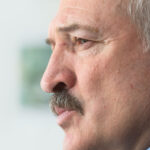After stagnating in 2023, Lithuania’s GDP now looks to be well on the road to full recovery. GDP is projected to have increased by 2.4 per cent in 2024, a figure that is forecast to rise further to 3.1 per cent this year before slowing slightly to 2.8 per cent in 2026.
According to the Organisation for Economic Co-operation and Development (OECD), strong real wage gains, especially until mid-2025, will support a pickup in private consumption, and exports will continue to increase along with demand from Lithuania’s main trading partners.
The main risks to the outlook are related to economic activity in the euro area, global energy prices and geopolitical tensions.
Fiscal policy is expected to tighten slowly over 2025-26, but more could be done to prepare for emerging spending needs by increasing spending efficiency and property tax revenues, and limiting informal economic activity.
Encouraging immigration at all skill levels and increasing the employability of younger and older workers would help alleviate labour shortages. Developing domestic capital markets, increasing R&D spending, and improving digital skills would help support productivity growth and sustain living standards despite population ageing.
A post-stagnation bounce
The Lithuanian economy appears to be shaking off its recent sluggishness with brio. After a year of stagnation in 2023, the country’s growth trajectory has turned upward with a series of indicators—ranging from robust consumer spending to an uptick in key manufacturing outputs—hinting at a more sustainable recovery.
Fresh data from early 2024 show a welcome combination of rising household incomes and improved consumer confidence. Even more cheering is that these trends continue against a backdrop of geopolitical uncertainty. While neighbouring economies grapple with fluctuating energy prices and rising borrowing costs, Lithuania’s careful fiscal stewardship and targeted reforms have kept overall risk factors at manageable levels.
But this cautious optimism does not come without caveats. Lithuania’s recovery is partly predicated on continued demand from its main trading partners, chiefly within the euro area. Any further weakening there could act as a drag on Lithuanian exports, which remain a key component of GDP.
Still, Lithuania’s demonstrated ability to pivot—evident in its growing foray into higher-value-added production—suggests that the economy is capable of adapting, even when faced with a shifting global environment.
Manufacturing and services: A changing balance
Lithuania’s manufacturing sector has long been dominated by traditional industries such as food processing, textiles and basic chemicals.
While these industries remain vital for employment, they face stiff competition from lower-cost producers in other parts of Eastern Europe and Asia.
In response, Lithuania has striven to diversify. In recent years, electronics, machinery and advanced manufacturing have gained prominence. Automation and technological investments are on the rise, fuelling an increase in productivity.
With relatively favourable labour costs compared with Western Europe, Lithuania has begun to position itself as a nearshoring hub for international companies seeking more agile supply chains in Europe.
The services sector, for its part, has not been idle. Fintech stands out. The government’s efforts to streamline financial regulations and attract foreign start-ups (as well as develop its own) have succeeded in turning Vilnius into a regional hub for innovative digital finance.
Meanwhile, business process outsourcing (BPO) and shared services continue to expand as multinationals look for locations with a stable business climate, solid digital infrastructure and a labour force adept at languages and technology.
These shifts hint at a progressive recalibration of Lithuania’s economic composition—from reliance on traditional manufacturing to higher-tech, service-oriented models that promise more resilience.
Opportunities for investment
For foreign investors, Lithuania offers several enticing propositions. First, the country’s stable regulatory framework and membership in the European Union grant ease of access to the continent’s single market, an advantage that can streamline export-led business models.
Second, Lithuania’s well-educated workforce—particularly in STEM disciplines—supports advanced manufacturing, IT services and research-driven endeavours. As the government continues to promote increased R&D spending, investors in biotechnology, advanced materials and software development may find ample scope to partner with or acquire local innovators.
Logistics also represents a promising avenue. Lithuania’s strategic position between the Nordic countries, Central Europe and the post-Soviet space has historically made it a crossroads for trade. Its port in Klaipėda, once overshadowed by larger maritime hubs in the Baltic region, has recently undergone modernisation, bolstering capacity for container shipping and distribution. This infrastructure is aligned with a broader push toward clean, efficient transport, creating a sweet spot for companies seeking a solid logistics base in Northeastern Europe.
Furthermore, the green transition offers fertile ground for new ventures. From renewable energy projects—particularly wind and solar in Lithuania’s coastal areas—to eco-friendly manufacturing processes, there is a budding ecosystem for sustainable investment.
As the European Union places increasing emphasis on the green agenda, Lithuania’s modest size and adaptable policymaking environment could prove advantageous for pilot projects or scale-up ventures in cleantech.
Consumer confidence and labour market dynamics
The improvement in real wages is a highlight of Lithuania’s current economic narrative. Rising wages—driven partly by strong economic demand at home and abroad—have served to boost consumer confidence, which had languished during the stagnation of 2023.
Household consumption now provides a tailwind for broader economic growth. With disposable incomes likely to remain on the upswing until at least mid-2025, retailers and service providers are gearing up for expanded operations.
However, the labour market has its share of tension. Although unemployment rates are moderate, there is a rising mismatch between the skills needed in growth industries and those held by significant segments of the workforce.
Low birth rates and emigration in past decades have exacerbated labour shortages in healthcare, advanced manufacturing, IT and a raft of service industries. To mitigate these challenges, government-led initiatives are encouraging immigration, targeting both high-skilled tech professionals and workers in vocational fields.
Similarly, policies that focus on integrating older workers—by offering retraining programmes—could help maintain workforce capacity even as demographic headwinds mount.
Risk and resilience
Despite the buoyant outlook, there are headwinds on the horizon. Chief among these is the risk of an economic slowdown in the euro area, which might dampen demand for Lithuanian exports.
Geopolitical uncertainty—heightened by tensions near the European Union’s eastern borders—casts a shadow over business sentiment. Spiking global energy prices, should they reappear, could destabilise input costs for Lithuanian manufacturers and weigh on consumer spending, particularly for lower-income households.
Meanwhile, inflationary pressures in Lithuania appear to be receding from the peaks seen in late 2022 and early 2023, thanks in part to tighter monetary policy across Europe and a cooler global economy.
Yet, if the global interest-rate environment were to shift again, Lithuania’s relatively high share of variable-rate lending could expose the domestic sector to higher debt-servicing costs. The banking industry, while well-capitalised, remains vigilant about credit quality, especially in the property and consumer-lending segments.
Policy pathways
Lithuania’s fiscal authorities aim to tighten policy moderately over 2025-26, partly to keep debt dynamics under control and satisfy EU budgetary requirements. While modest consolidation might marginally temper growth, it is also seen as necessary to safeguard macroeconomic stability.
Officials have underscored the need to enhance spending efficiency—especially in healthcare, education and infrastructure—ensuring that budget allocations are cost-effective and yield tangible social or economic returns.
Property tax reforms, which have been under discussion, could broaden the tax base in a way that aligns local revenues more directly with the real estate market. Further limiting the sizeable shadow economy would add to the public purse, creating fiscal space to invest in capital projects that bolster productivity.
Critics, however, argue that progress on tackling the informal sector and implementing property tax reforms remains slower than hoped, pointing to entrenched political interests and public resistance to potentially higher tax bills.
Building a productive future
In the long run, policies that support labour market adaptability and technological advancement will be pivotal.
Lithuania’s efforts to increase the employability of both younger and older workers reflect a pragmatic response to demographic realities.
Meanwhile, building a stronger domestic capital market—currently underdeveloped compared with Western Europe—would diversify financing channels for businesses, reducing reliance on bank loans and unlocking additional resources for expansion and innovation.
Photo by Darya Tryfanava on Unsplash.







